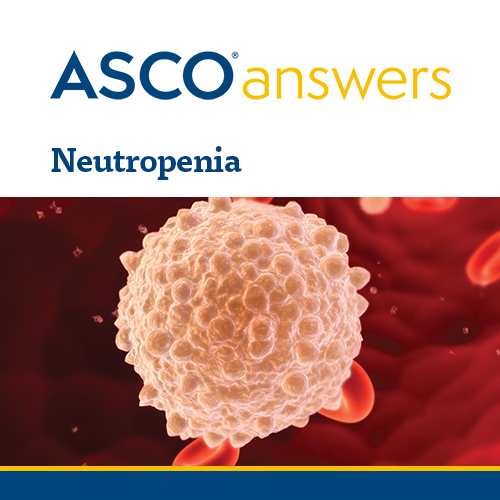Neutropenia is when a person has a low level of neutrophils. Neutrophils are a type of white blood cell. All white blood cells help the body fight infection. Neutrophils fight infection by destroying harmful bacteria and fungi (yeast) that invade the body. Neutrophils are made in the bone marrow. Bone marrow is the spongy tissue found in larger bones such as the pelvis, vertebrae, and ribs.
Half of people with cancer who are receiving chemotherapy have some level of neutropenia. It is a common side effect in people with leukemia. People who have neutropenia have a higher risk of getting serious infections. This is because they do not have enough neutrophils to kill organisms that cause infection. People with severe or long-lasting neutropenia are most likely to develop an infection.
Signs and symptoms of neutropenia
Neutropenia itself may not cause any symptoms. People usually find out they have neutropenia from a blood test or when they get an infection. Some people will feel more tired when they have neutropenia. Your doctor will schedule regular blood tests to look for neutropenia and other blood-related side effects of chemotherapy.
For people with neutropenia, even a minor infection can quickly become serious. Talk with your health care team right away if you have any of these signs of infection:
-
A fever, which is a temperature of 100.5°F (38°C) or higher
-
Chills or sweating
-
Sore throat, sores in the mouth, or a toothache
-
Abdominal pain
-
Pain near the anus
-
Pain or burning when urinating, or urinating often
-
Diarrhea or sores around the anus
-
A cough or shortness of breath
-
Any redness, swelling, or pain (especially around a cut, wound, or catheter)
-
Unusual vaginal discharge or itching
Causes of neutropenia
Several things related to cancer and its treatment can cause a low level of neutrophils, including:
-
Some types of chemotherapy
-
Cancers that affect the bone marrow directly, such as leukemia, lymphoma, and multiple myeloma
-
Cancer that has spread
-
Radiation therapy to several parts of the body or to bones in the pelvis, legs, chest, or abdomen
Some people with cancer are more likely to develop neutropenia, including:
-
People who are age 70 or older
-
People with a lowered immune system from other causes, such as having HIV or an organ transplant
Chemotherapy and neutrophils
The timing of the drop in neutrophil levels is based on the type or dose of chemotherapy.
-
Neutrophil counts generally start to drop about a week after each round of chemotherapy begins.
-
Neutrophil levels reach a low point about 7 to 14 days after treatment. This is called the nadir. At this point, you are most likely to develop an infection.
-
Your neutrophil count then starts to rise again. This is because your bone marrow restarts normal production of neutrophils. But it may take 3 to 4 weeks to reach a normal level again.
-
When your neutrophil level returns to normal, you are ready for the next round of chemotherapy.
Managing and treating neutropenia
An important part of cancer care is relieving the side effects of treatment. This is called palliative care or supportive care. Talk with your health care team about any symptoms you have or any changes in symptoms.
While taking chemotherapy, sometimes your neutrophil level does not return to normal fast enough. Or you develop neutropenia. In this case, your doctor may take certain precautions, including:
-
Delaying the next round or lower the dose of chemotherapy.
-
Recommending antibiotics during longer periods of neutropenia to prevent infections.
-
If you are at risk of developing neutropenia with a fever, called febrile neutropenia, your doctor may give you medications called white blood cell growth factors or colony-stimulating factors (CSFs). Your risk depends on your diagnosis, age, other health conditions in addition to cancer, and the chemotherapy regimen given. Most chemotherapy regimens are not linked with a high risk of developing febrile neutropenia. Examples of CSF medications include filgrastim (multiple brand names), sargramostim (Leukine), and pegfilgrastim (multiple brand names). They help the body make more white blood cells to fight off infection. These medications may cause bone pain. This is a sign that they are working because the pain is caused by the bone marrow making more blood cells. Read more about ASCO’s recommendations for white blood cell growth factors.
If you have neutropenia, practice good personal hygiene to lower your risk of infection. This includes washing your hands regularly and staying away from people who are sick.
Related Resources
Side Effects of Radiation Therapy
More Information
National Cancer Institute: Infection and Neutropenia During Cancer Treatment

 Download ASCO's free
Download ASCO's free